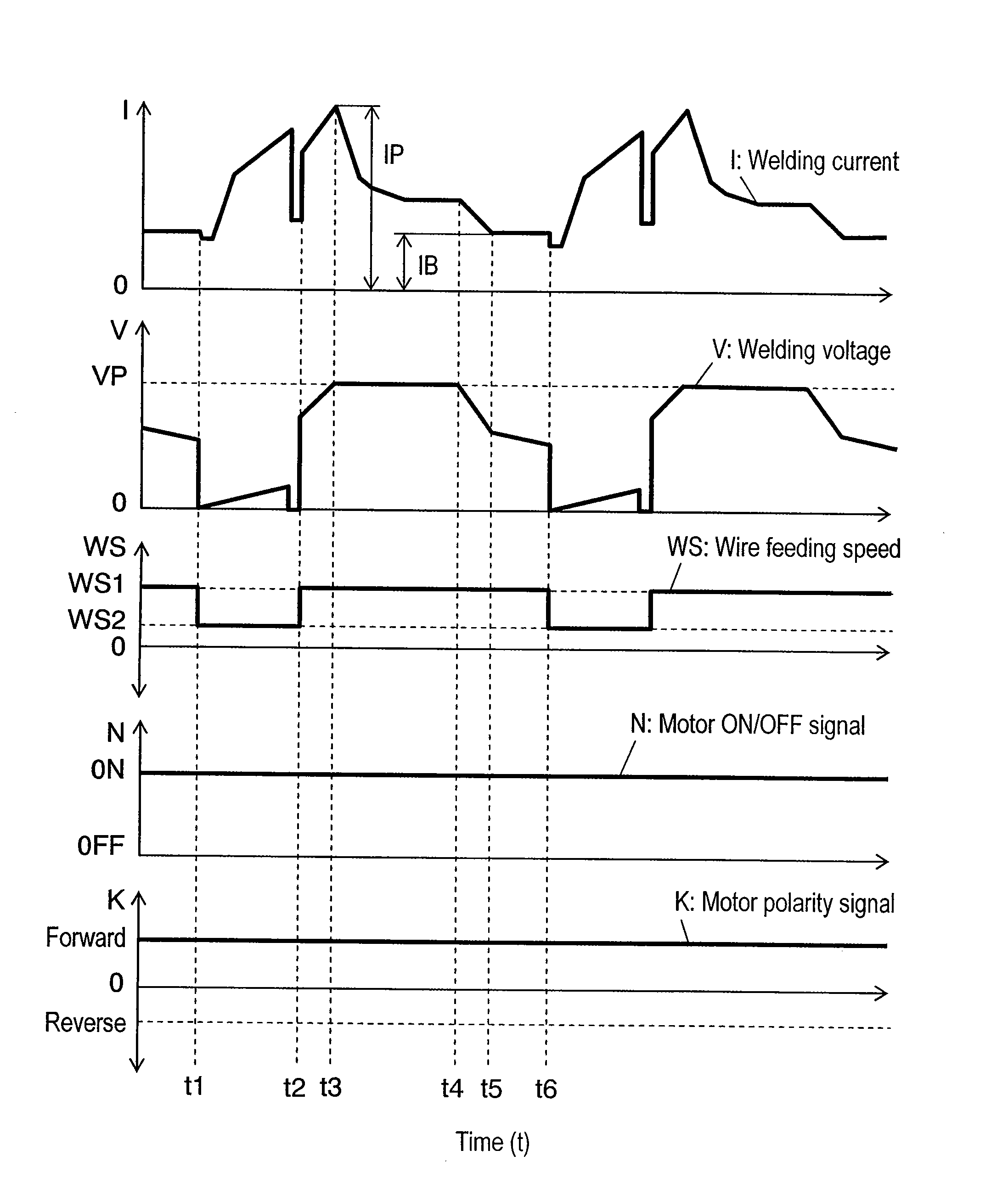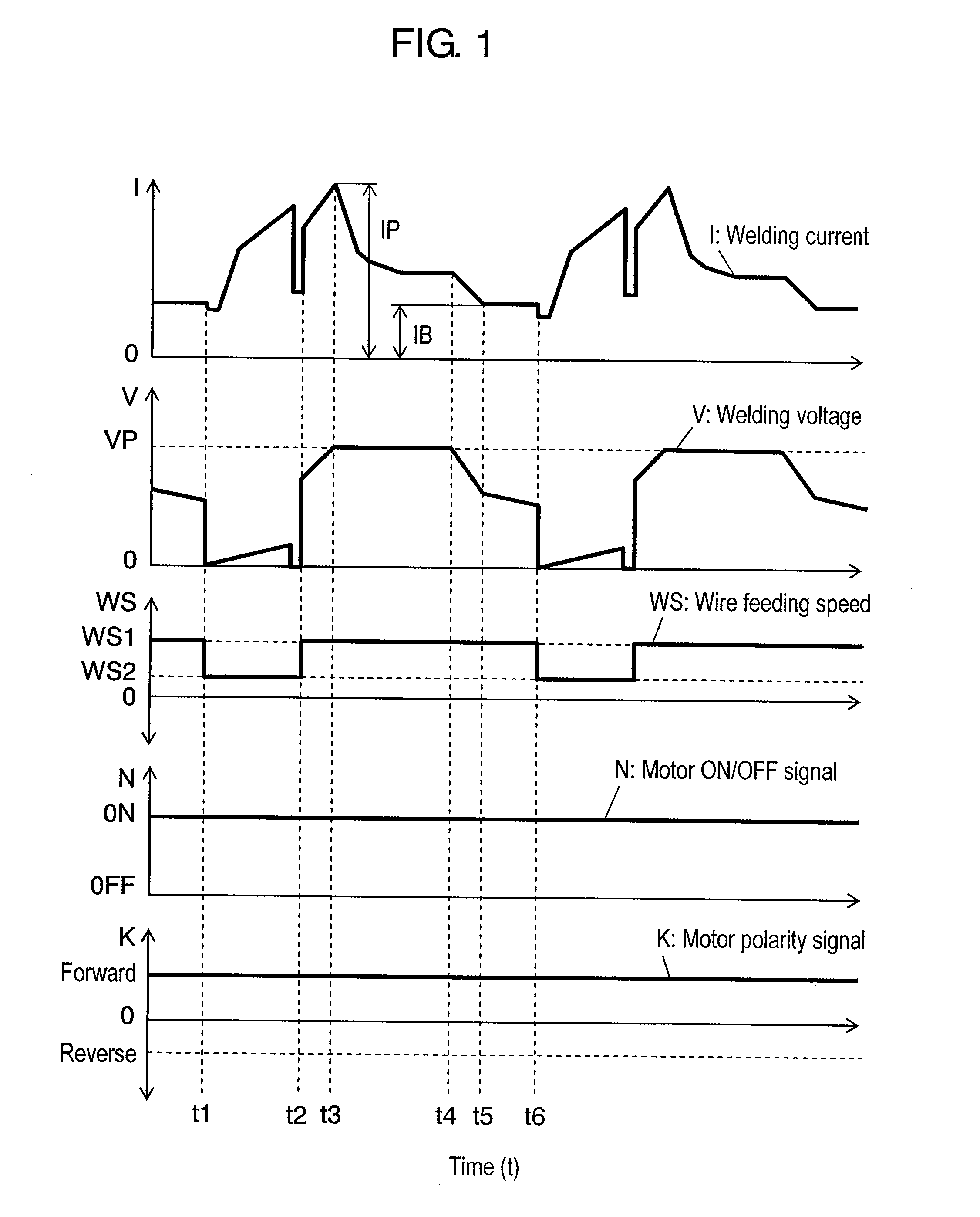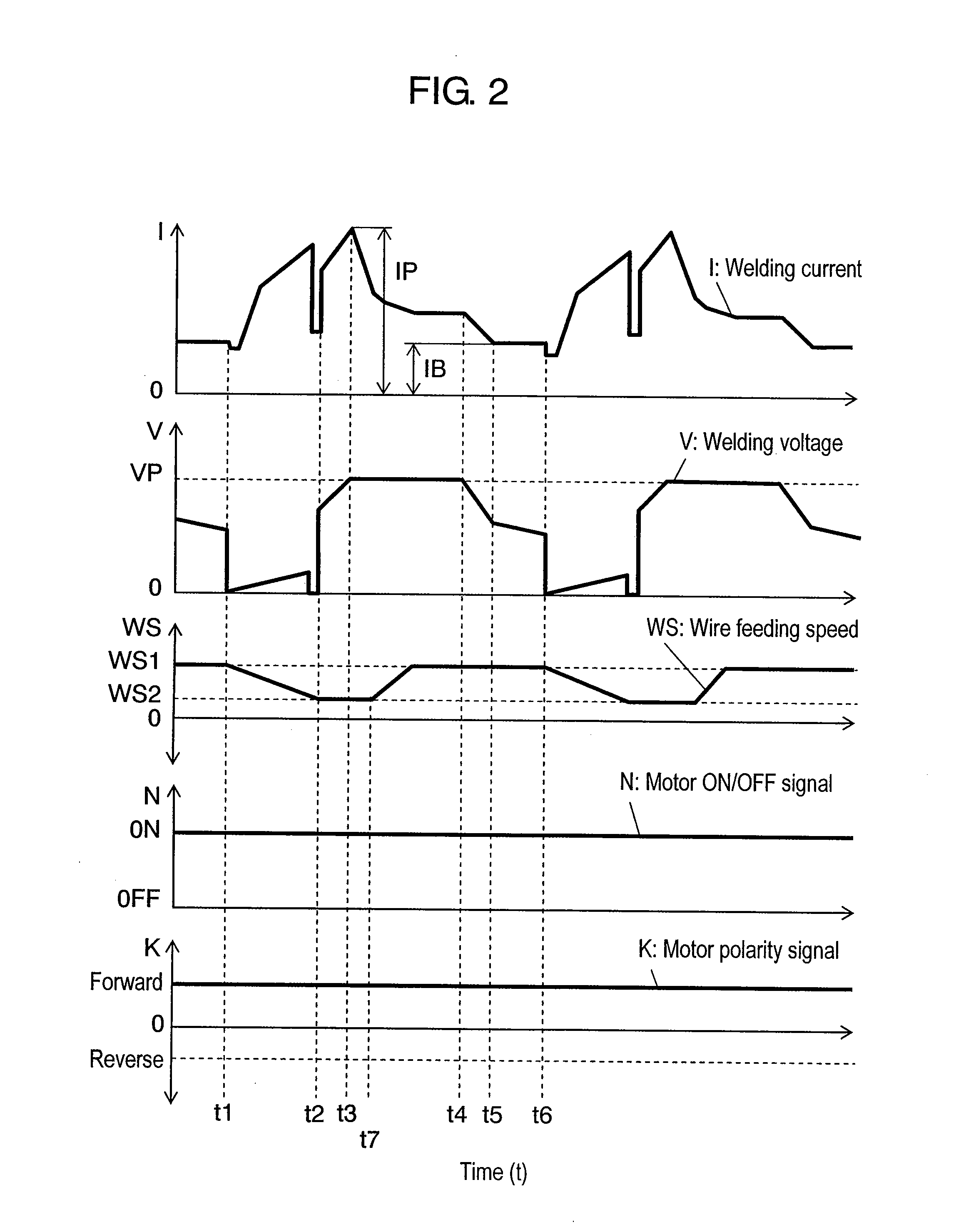Method of Controlling Arc Welding and Welding Apparatus
a control method and welding technology, applied in the direction of welding/cutting media/materials, welding apparatus, manufacturing tools, etc., can solve problems such as arcing stability
- Summary
- Abstract
- Description
- Claims
- Application Information
AI Technical Summary
Benefits of technology
Problems solved by technology
Method used
Image
Examples
first exemplary embodiment
[0042]FIG. 1 shows a method of controlling arc welding according to a first exemplary embodiment of this invention. Shown in the figure are welding current I, welding voltage V, wire feeding speed WS, motor ON / OFF signal N for directing to turn on and off of a wire feeding motor, and motor polarity signal K for regulating a rotating direction of the wire feeding motor, as they change with the time respectively.
[0043]Welding current I is increased at a predetermined gradient by means of current control in a short-circuiting period from time t1 to time t2. At the same time, wire feeding speed WS is decreased from base feeding speed WS1 to another speed WS2. Welding current I is decreased steeply immediately before the end of the short-circuiting period by detecting a tapering of melted welding wire.
[0044]From time t2 to time t3 in an arcing period, welding current I is increased at a predetermined gradient by means of current control until it reaches peak current IP of a value determi...
second exemplary embodiment
[0066]FIG. 7 shows a method of controlling arc welding according to a second exemplary embodiment of this invention. Shown in this figure are welding current I, welding voltage V, wire feeding speed WS, motor ON / OFF signal N for directing to turn on and off of a wire feeding motor, and motor polarity signal K for regulating a rotating direction of the wire feeding motor, as they change with the time respectively.
[0067]This method differs from that of the first exemplary embodiment in respect that wire feeding speed WS is brought to zero, that is, feeding of the wire is stopped during a short-circuiting period from time t1 to time t2. All other functions remain analogous to the first exemplary embodiment (refer to FIG. 1).
[0068]Wire feeding speed WS can be changed at a predetermined gradient in the same manner as the first exemplary embodiment (refer to FIGS. 2 and 3). In addition, a timing of changing wire feeding speed WS can be delayed as well (refer to FIG. 2).
[0069]It is also po...
third exemplary embodiment
[0072]FIG. 8 shows a method of controlling arc welding according to a third exemplary embodiment of this invention. The figure shows welding current I, welding voltage V, wire feeding speed WS, motor ON / OFF signal N for directing to turn on and off of a wire feeding motor, and motor polarity signal K for regulating a rotating direction of the wire feeding motor, as they change with the time respectively.
[0073]This method differs from that of the first exemplary embodiment in respect that wire feeding speed WS is reversed to a backward direction during a short-circuiting period from time t1 to time t2. All other functions remain analogous to the first exemplary embodiment (refer to FIG. 1).
[0074]Wire feeding speed WS can be changed at a predetermined gradient in the same manner as the first exemplary embodiment (refer to FIGS. 2 and 3). In addition, a timing of changing wire feeding speed WS can be delayed as well (refer to FIG. 2). It is also possible to offset a decreased amount an...
PUM
| Property | Measurement | Unit |
|---|---|---|
| peak current IP | aaaaa | aaaaa |
| speed | aaaaa | aaaaa |
| feeding speed | aaaaa | aaaaa |
Abstract
Description
Claims
Application Information
 Login to View More
Login to View More - R&D
- Intellectual Property
- Life Sciences
- Materials
- Tech Scout
- Unparalleled Data Quality
- Higher Quality Content
- 60% Fewer Hallucinations
Browse by: Latest US Patents, China's latest patents, Technical Efficacy Thesaurus, Application Domain, Technology Topic, Popular Technical Reports.
© 2025 PatSnap. All rights reserved.Legal|Privacy policy|Modern Slavery Act Transparency Statement|Sitemap|About US| Contact US: help@patsnap.com



